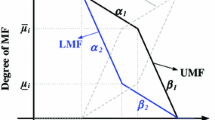Abstract
This paper presents a new approach for implementing an analog fully programmable membership function generator (MFG) with twin-cell topology which can operate in Transconductance-mode. The proposed multi-shaped MFG circuit is capable of generating the trapezoidal, triangular, S- and Z-shaped membership functions. Also, a full programmability disposition in all parameters of height, position and width is achievable. To make this purpose, a simple structure of complementary differential pairs is utilized which changing of their applied input constant voltages and bias current led into programming, independently. Moreover, the proposed MFG architecture has a stellar functionality which makes it suitable for implementing as a general-purpose fuzzy logic controller. Since in this proposed MFG approach, only 26 transistors are used, the chip area and total power dissipation can be decreased to 552 µm2 and 83.8 µW, respectively, which is reduced in comparison with the other works. The proposed MFG circuit is simulated in 65 nm standard CMOS technology with a single supply voltage of 1.2 V. The post-layout simulation results show that the proposed twin-cell MFG circuit is in great collusion which indicates a high delicacy of the proposed design, and the circuit presents the profit of negligible linearity error less than 5.2%. Furthermore, this proposed circuit is compared with a simulated MFG circuit named the comparative MFG, and the exported results show the improved functionality of the proposed twin-cell MFG, specifically.















Similar content being viewed by others
References
A. Abolhasani, M. Tohidi, M. Mousazadeh, A. Khoei, K. Hadidi (2013) A high speed and fully tunable MFG with new programmable CMOS OTA and new MIN circuit, in Proceedings of the 20th International Conference Mixed Design of Integrated Circuits and Systems-MIXDES (IEEE, 2013). pp. 169–173
O. Castillo, P. Melin, J.R. Castro, Computational intelligence software for interval type-2 fuzzy logic. Comput. Appl. Eng. Edu. 21(4), 737–747 (2013)
B.Y. Darani, A. Khoei, K. Hadidi, A highly accurate programmable CMOS fuzzifier circuit, in 2010 International Conference on Electronic Devices, Systems and Applications (IEEE, 2010). pp. 93–96
M. Daneshwar, S. Aminifar, G. Yosefi, Hardware implementation of an adaptive mixed signal neuro fuzzy system using high speed and low power analog CMOS circuits. J. Basic Appl. Sci. Res. 1(10), 1415–1422 (2011)
M. Ghasemzadeh, A. Akbari, A. Khoei, K. Hadidi, A novel mixed-signal digital voltage mode CMOS fuzzy logic controller in 0.18 μm technology, in 2014 Proceedings of the 21st International Conference Mixed Design of Integrated Circuits and Systems (MIXDES) (IEEE, 2014). pp. 148–153
M. Ghasemzadeh, A. Akbari, A. Soltani, A. Khoei, K. Hadidi, A novel mixed-signal digital CMOS fuzzy logic controller in current mode, in 2014 Proceedings of the 21st International Conference Mixed Design of Integrated Circuits and Systems (MIXDES) (IEEE, 2014). pp. 142–147
J. Hang, J. Zhang, M. Cheng, Application of multi-class fuzzy support vector machine classifier for fault diagnosis of wind turbine. Fuzzy Sets Syst. 297, 128–140 (2016)
A. Kandel, G. Langholz, Fuzzy Hardware: Architectures and Applications (Springer, Berlin, 2012)
A. Khalilzadegan, A. Khoei, K. Hadidi, Circuit implementation of a fully programmable and continuously slope tunable triangular/trapezoidal membership function generator. Analog Integr. Circ. Sig. Process 71(3), 561–570 (2012)
R. Khayatzadeh, M. Berke Yelten, A novel multiple membership function generator for fuzzy logic systems, in 2018 15th International Conference on Synthesis, Modeling, Analysis and Simulation Methods and Applications to Circuit Design (SMACD), (IEEE, 2018). pp. 101–104
T.M. Khaneshan, M. Nematzadeh, A. Khoei, K. Hadidi, An analog reconfigurable Gaussian-shaped membership function generator using current-mode techniques, in 20th Iranian Conference on Electrical Engineering (ICEE2012) (IEEE, 2012). pp. 145–149
J.A. Mendez, A. Leon, A. Marrero, J.M. Gonzalez-Cava, J.A. Reboso, J.I. Estevez, J.F. Gomez-Gonzalez, Improving the anesthetic process by a fuzzy rule based medical decision system. Artif. Intell. Med. 84, 159–170 (2018)
C. Muniz-Montero, L.A. Sanchez-Gaspariano, J.M. Rocha-Perez, J. E. Molinar-Solis, C. Sanchez-Lopez, 1.5 V Fully programmable CMOS membership function generator circuit with proportional DC-voltage control. Radioengineering 22(2) (2013)
M. Pasieka, N. Grzesik, K. Kuźma, Simulation modeling of fuzzy logic controller for aircraft engines. Int. J. Comput. 16(1), 27–33 (2017)
A. Peymanfar, A. Khoei, K. Hadidi, Design of a general propose neuro-fuzzy controller by using modified adaptive-network-based fuzzy inference system. AEU Int. J. Electron. Commun. 64(5), 433–442 (2010)
M. Tohidi, A. Abolhasani, M. Mousazadeh, A. Khoei, K. Hadidi, A circuit implementation of an ultra high speed, low power analog fully programmable MFG, in Proceedings of the 20th International Conference Mixed Design of Integrated Circuits and Systems-MIXDES (IEEE, 2013). pp. 151–156
Y.V. Yaghmourali, A. Fathi, M. Hassanzadazar, A. Khoei, K. Hadidi, A low-power, fully programmable membership function generator using both transconductance and current modes. Fuzzy Sets Syst. 337, 128–142 (2018)
A. Youssef, M. El Telbany, A. Zekry, Reconfigurable generic FPGA implementation of fuzzy logic controller for MPPT of PV systems. Renew. Sustain. Energy Rev. 82, 1313–1319 (2018)
G. Yosefi, S. Mirzakuchaki, F. Raissi, New Programmable CMOS Fuzzifier and C2V Circuits Applicable in FLC Chip for Signal Processing of MEMS Glucose Sensors. Appl. Sci. 5(3), 402–414 (2015)
L.A. Zadeh, The birth and evolution of fuzzy logic. Int. J. General Syst.17(2–3), 95–105 (1990)
L.A. Zadeh, Fuzzy logic. Computer 21(4), 83–93 (1988)
Author information
Authors and Affiliations
Corresponding author
Additional information
Publisher's Note
Springer Nature remains neutral with regard to jurisdictional claims in published maps and institutional affiliations.
Rights and permissions
About this article
Cite this article
Ghasemian, H., Karami, S., Abiri, E. et al. Design of a Low Power Analog and Multi-shaped Fully Programmable Twin-Cell Membership Function Generator Circuit in 65 nm CMOS Technology. Circuits Syst Signal Process 40, 2–21 (2021). https://doi.org/10.1007/s00034-020-01463-1
Received:
Revised:
Accepted:
Published:
Issue Date:
DOI: https://doi.org/10.1007/s00034-020-01463-1




